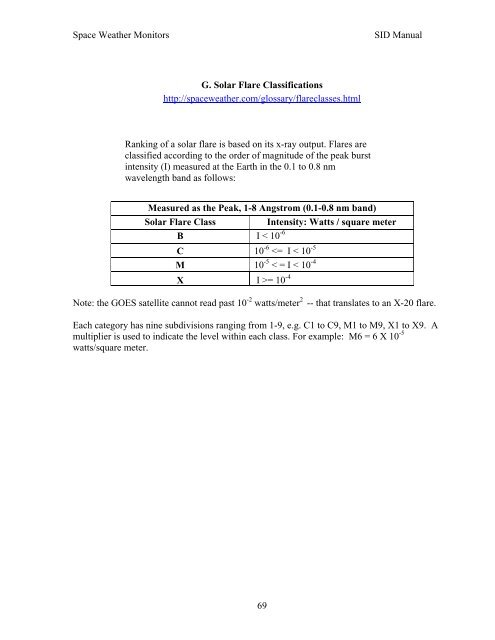Space Weather Monitors SID Users Manual - Stanford Solar Center ...
Space Weather Monitors SID Users Manual - Stanford Solar Center ...
Space Weather Monitors SID Users Manual - Stanford Solar Center ...
You also want an ePaper? Increase the reach of your titles
YUMPU automatically turns print PDFs into web optimized ePapers that Google loves.
<strong>Space</strong> <strong>Weather</strong> <strong>Monitors</strong> <strong>SID</strong> <strong>Manual</strong><br />
G. <strong>Solar</strong> Flare Classifications<br />
http://spaceweather.com/glossary/flareclasses.html<br />
Ranking of a solar flare is based on its x-ray output. Flares are<br />
classified according to the order of magnitude of the peak burst<br />
intensity (I) measured at the Earth in the 0.1 to 0.8 nm<br />
wavelength band as follows:<br />
Measured as the Peak, 1-8 Angstrom (0.1-0.8 nm band)<br />
<strong>Solar</strong> Flare Class Intensity: Watts / square meter<br />
B I < 10 -6<br />
C 10 -6 = 10 -4<br />
Note: the GOES satellite cannot read past 10 -2 watts/meter 2 -- that translates to an X-20 flare.<br />
Each category has nine subdivisions ranging from 1-9, e.g. C1 to C9, M1 to M9, X1 to X9. A<br />
multiplier is used to indicate the level within each class. For example: M6 = 6 X 10 -5<br />
watts/square meter.<br />
69



